Emma Stoye investigates how instruments for space exploration are built and how the technology brings benefits down to Earth
It’s been a good couple of years for space science. Last November, the European Space Agency (ESA) celebrated successfully landing a spacecraft on a comet for the first time. Nasa’s Curiosity rover has spent the last three years trundling across the surface of Mars. And as Chemistry World goes to press, the agency’s New Horizons probe, which launched back in 2006, is making a historic flypast of dwarf planet Pluto. With every new corner of the universe we explore, we learn more and more about what it is made of. And while the rockets and spaceships are certainly impressive, we owe the vast majority of our knowledge to the scientific instruments they carry. Behind every mission are thousands of people, vast sums of money and years – sometimes decades – of painstaking development to take the best of our research tools to space.
Light and strong
When it comes to designing a piece of analytical kit, something that will have to operate in space is very different to its lab bench counterpart.
‘The biggest challenge usually is not having a mains plug – 230 volts is a lot of power,’ says Geraint Morgan from the Open University in the UK. Back in the 1990s, Morgan developed the gas chromatography and inlet system for the shoe-box sized Ptolemy instrument on board Rosetta’s Philae lander, which was designed to analyse volatiles on the surface of comet 67P using GC–MS. This relies on batteries charged by solar panels, which will often mean the equipment will only be able to be switched on for short periods to conserve power. In the case of Ptolemy, there was a window of just a few hours immediately after Philae landed to collect data, as it landed in an area that did not receive enough sunlight to power the battery and had to shut down.
‘The main other [considerations] in space are volume, mass, and the environmental conditions such as temperature, radiation and the shock and vibrations from the launch – or bouncing off a comet!’ Morgan says. ‘It’s about designing things to be energy efficient, making them from materials that are strong but not too heavy – so for instance we use a lot of carbon fibre and titanium.’ Morgan and his colleagues are based in Milton Keynes, near the Silverstone race track, and Morgan says he and his colleagues work with several specialist companies that supply parts for the Formula One industry. In many ways, he says, engineering spacecraft and racing cars demand similar expertise. ‘Machining out of things like titanium is very hard – it’s not something you can do unless you’re skilled at it,’ he explains. ‘They have the same rationale … they want to make things strong, but light, and small.’
When it comes to the scientific capability of instruments it is a lesson in compromise, says Morgan. ‘There is never a perfect solution – you’re always playing one [desirable property] off against the other. Ptolemy had to be less than 5kg ` if you make something small, what you’re effectively saying is that the concentration of the gas species has to be quite large, because otherwise you can’t get the volume of gas in.’ The instrument also had to be able to survive a temperature range of –120°C to 70°C. ‘That puts strain on your electronics and everything else,’ Morgan says. Being in space did help one aspect of the design, however: ‘The beauty of space is that you don’t need to have vacuum pumps!’
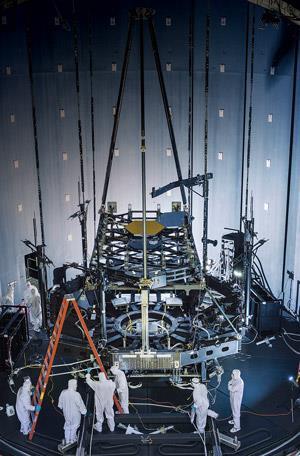
Sticking it all together
It gets even more complicated when multiple instruments – often built by different groups – have to be integrated on a single spacecraft, says Ralph Cordey from Airbus Defence and Space in Stevenage, UK, which builds rockets, satellites and other spacecraft. ‘If you were carrying just one experiment, you’d design a spacecraft very specifically to carry that, resource it, protect it, send its data back to Earth,’ he explains. ‘But generally a mission into the solar system is like a bus: it’s carrying lots of different passengers on it to do a whole range of science. We have to work out the interfaces between them.’ And if different pieces of equipment interfere with one another, adjustments have to be made to the whole craft. ‘You might end up building a four-metre long boom and attaching something to the end of that,’ says Cordey. ‘I’d be a liar if I said it works beautifully all the time because it doesn’t.’
Designing the kit is difficult, but actually building it brings its own set of challenges. Airbus’s satellite manufacturing facility in Stevenage contains a bus-sized autoclave for curing the materials, along with several huge cleanrooms where air is continuously circulated to avoid contamination with dust and bacteria as space-bound apparatus is assembled by spacesuit-clad engineers. ‘If you’ve got a spacecraft that’s going to last for 10 years, you can’t allow any dust to get in the mechanism because eventually that may gum things up,’ says Cordey. ‘It becomes even more acute when you’re doing things where the dust can interfere with the measurements – going to Mars, for example, you don’t want to bring any material from Earth that’s going to give a false reading. Optical instruments can be tricky as well, particularly ones that go to very bright places looking towards the sun, because any dust on the optics scatters light and reduces the performance. You’ve designed this amazing thing, you’ve put it on a spacecraft to go halfway across the solar system, the last thing you want is dust on the lens.’
Testing times
In between the process of designing a specialist instrument and putting it all together, ready for lift-off, is a long and complex process of testing, re-testing and tweaking the design. Anything being sent into space must undergo several stages of simulation testing to make sure it can survive and function under the extreme conditions it will experience.
‘Everything we do on Ptolemy we’ve already done in a laboratory,’ says Morgan. ‘Space [instrumentation] is all about various models – the flight model is actually the last one you build. You usually build something called a breadboard first, so you put the concepts on the bench. Then you build qualification models – those go through a rigorous testing programme.’
The testing process has to make sure something is capable of taking measurements in space without actually sending it there – so equipment is tried out in chambers that simulate the environment in which it will be used as closely as possible. ‘We’ve got a big vacuum tank that’s cooled to nearly –100°C, and we can actually simulate the gases from the comet by allowing gases into the vacuum chamber.’ says Morgan.
The more complex the mission, the more lengthy and extensive the testing process is. ‘The cryo-vac chamber that we use at the Goddard Space Flight Center is about five or six storeys high, so you can imagine if you have to pump all of that air out, it’s quite a feat,’ says Stefanie Milam, who is working on instrumentation for the James Webb Space Telescope (JWST), Nasa’s long anticipated replacement for Hubble and which is on track to launch in 2018.
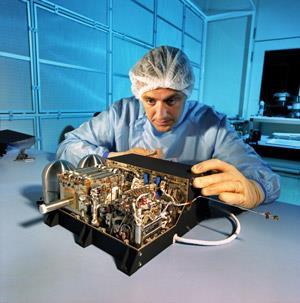
The JWST will carry a science instrument module comprising four infra-red-detecting instruments that will allow it to measure light from the universe’s first stars and galaxies as well as analyse the atmospheres of faraway comets and exoplanets by looking for the spectroscopic signatures of molecules such as water, carbon dioxide, ammonia and methane. ‘We just recently had a second cryo-vac test with all the instruments last summer,’ says Milam. The final instrument tests will take place in September this year, after which the instruments will be fixed onto the telescope ready for yet more tests.
Aside from the scientific instruments, the JWST has considerable challenges because of its size – the main telescope has a 6.5m primary mirror made up of 18 smaller segments, as well as a sunshield the size of a tennis court. ‘I think JWST is getting close to being as complicated a project as human beings can actually pull off!’ says Marcia Rieke from the University of Arizona, US, who is leading the development of the JWST’s near-infrared camera. The entire structure has to be built in segments and stored in a folded state as it is launched. ‘It involves hundreds of little actuators that move the segments and the calculations to know exactly where to put them once you’re on orbit and so on, and technology has gotten to the point where all that is perfectly feasible – but it is very complicated.’
Ready for blast off
As well as how well instruments will perform once they are actually in space, tests must assess how they will fare during the launch. ‘It’s a rough ride, so you have to make sure that all the different bits of the spacecraft including its precious instruments can survive the shaking and acoustic loads you get,’ says Cordey. To do this, model instruments have to be tested in specialist centres where they are vibrated and blasted with giant loudspeakers to simulate the noise and vibration of lift-off on a rocket. If a model system fails to ‘survive’ any of these simulations, it has to be redesigned and rebuilt until it does. Every phase of testing is crucially important – groups contributing individual instruments to a space mission have to prove their bit can stand up to the challenge.
‘Unless you can prove [the system] can survive these conditions they’re not going to let you go,’ says Morgan. Even when everything has passed the testing phases, the launch itself is a nerve-wracking experience. ‘Unfortunately one or two percent of all rockets blow up – that’s just a fact,’ says Rieke, ‘If that bothers you then you should not work on a space project!’
Translational tech
There’s no denying that space missions are demanding in terms of time, resources and funds. But while the primary objective may be to make observations in space, there are many situations where the technologies developed have been used to solve problems closer to home.
The European Space Agency awards funding on a competitive basis to support non-space business ideas that arise from space technologies. Its business incubation centres across Europe are home to hundreds of start-up companies. Morgan has set up two companies at the ESA’s UK incubation centre at Harwell, together with colleagues who also worked on space projects. His company Insect Research Systems is developing an ‘affordable version of Ptolemy’ that can be used to test for bedbugs in hotels by measuring the pheromones they produce. ‘We’re building a system that will allow us to do exactly the same as Ptolemy does – trap, concentrate, separate and detect,’ says Morgan. ‘But it’s something that can be used by non-experts in the field. Hotels can use it as part of an integrated pest management programme – they can’t stop bedbugs being transferred, but they can prevent them becoming an infestation.’
His second company, Oxford Micro Medical, is working on a diagnostic breath test for the stomach ulcer-causing bacterium Helicobacter pylori that is a widespread problem in developing countries. At present, the infection is easy to treat, but expensive to diagnose. ‘Normally you use a big mass spectrometer system, what we’re trying to do is build an affordable version of that, using technology that was designed my by co-director Ejaz Huq as an alternative to Ptolemy for future space missions.’ says Morgan. Both companies have recently had government investment from the UK’s innovation agency Innovate UK.
Morgan and his Open University colleagues Andy Morse and Simon Sheridan are also using expertise gained on space projects to work with engineers at BAE Systems to develop a new air quality monitoring system for British submarines as part of the UK government’s Trident replacement programme. ‘Currently there are American systems on board that have been there for the past 30 years. They’re perfectly adequate, but Britain is looking for its own capability,’ Morgan says. Their systems, which they delivered in 2012, will save the government ‘tens of millions of pounds’.
There’s no part of Ptolemy in the submarine system, says Morgan. ‘But what is there is the know-how and the people. The three of us have worked together now for 20 years providing solutions to difficult challenges. What that means is we’ve made a hell of a lot of mistakes already! But we’ve also got a lot of things right, so we can go into the back-catalogue because we’ve got this array of skills and capabilities.’
They have even produced a ‘robot dog’ for Givaudan, the world’s largest fragrance company. Exactly how the sniffing technology will be used is apparently top secret, but Morgan says it is ‘so disruptive in terms of capability that they’re taking it to headquarters in Paris where it’s going to be used by the perfumers’.
‘Again, that system doesn’t use mass spectrometry, but it uses our know-how,’ he says. ‘The most important thing is the fact that we’ve tried to solve some of these problems before and we’ve already been successful. So that means we can take parts of one project and use it on another.’
Mars yard

One of Airbus’s more unconventional testing facilities is the ‘Mars yard’, a 13m × 30m sandpit that has been used to train the navigation system that will enable the ESA’s ExoMars rover to negotiate the red planet’s terrain without having to be constantly steered by scientists on Earth. Prototype rovers are driven around the yard, which has been adorned with rocks and boulders to mimic the Martian terrain and kitted out with non-flickering lights and red–brown walls to create a realistic visual simulation for the rover’s on board camera. The spacecraft for the first part of the ExoMars mission – which will survey the planet’s atmosphere in orbit and help select a landing site for the rover – is currently being constructed and tested, and will be launched in January next year. The rover itself, which will search for traces of past or present life over a 6-month mission – will be launched in 2018.
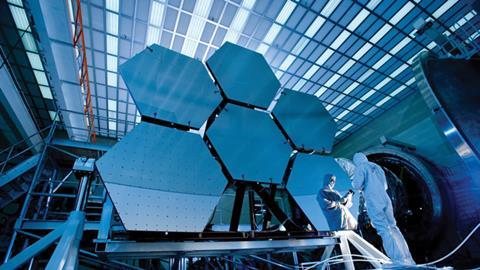

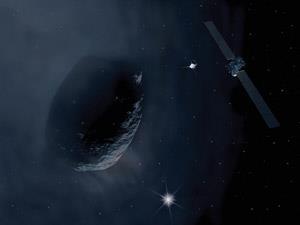


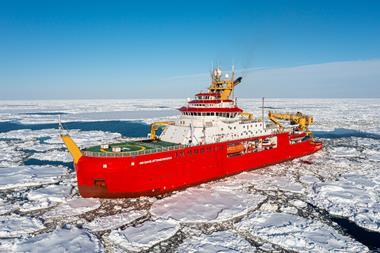
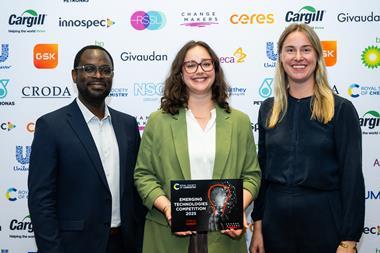


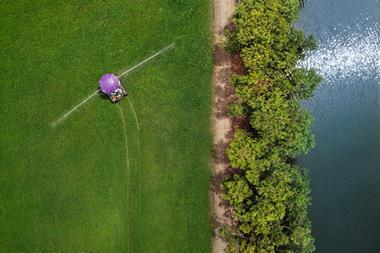
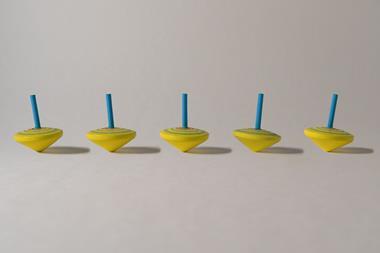


No comments yet